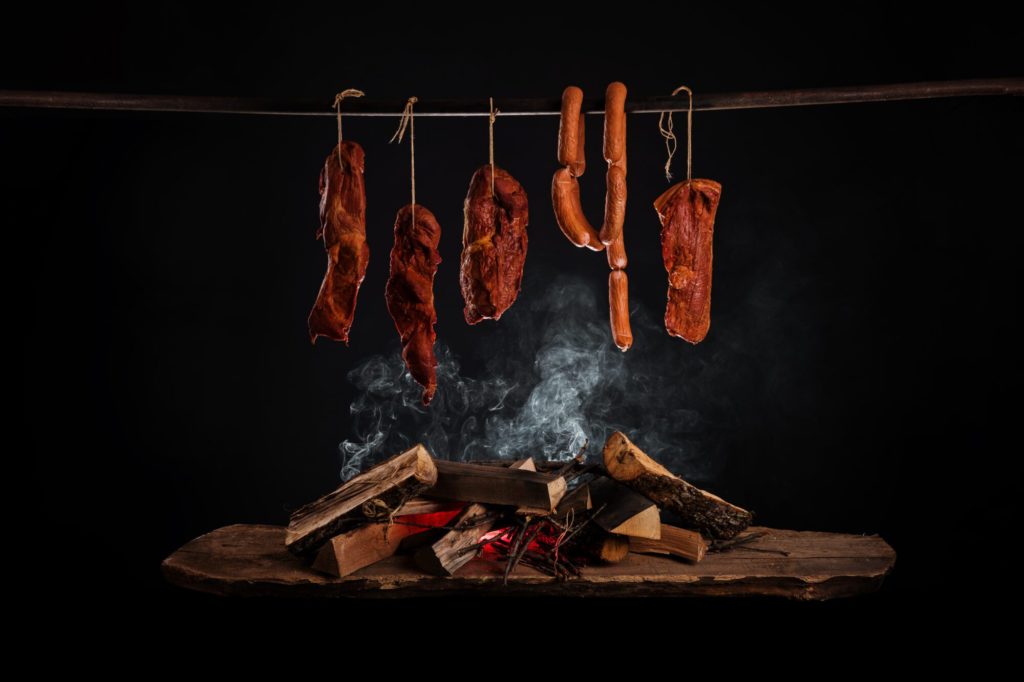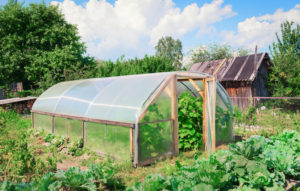Smoking meats is an age-old technique that adds rich flavor and tenderness to a variety of cuts, from brisket and pork ribs to chicken and turkey.
While many people associate smoking with fancy restaurant dishes or backyard barbecues, the practice can also be used by those looking for an off-grid cooking solution.
By investing in a smoker or building your own, you can create delicious meals using locally sourced ingredients and without relying on electricity or gas.
We’ll explore the art of smoking meats off the grid, including tips for selecting the right equipment, sources for sustainable meat options, and recipes to get you started.
Whether you’re a seasoned cook or just starting out, these techniques will help you enjoy the satisfying taste of homemade, slow-cooked meals even in the absence of modern amenities.
So grab your wood chips, kindling, and meat of choice – we’re ready to dive into the world of off-grid smoking!
Choose the right cuts of meat
Look for meats that are high in fat content, such as brisket, pork shoulder, or ribs. These will be more tender and flavorful when smoked.
These meats will be more tender and flavorful when smoked, as the fat will help to keep the meat moist and add rich flavor.
Brisket, pork shoulder, and ribs are all excellent choices, as they contain a high amount of fat that will help to enhance the smoking process.
To maximize the flavor and texture of these cuts, it’s important to use a dry rub or marinade that complements the meat’s natural flavors.
For example, a simple blend of salt, pepper, garlic, and paprika can bring out the rich, beefy flavors of brisket, while a sweeter rub with honey, brown sugar, and cumin can enhance the pork shoulder’s natural sweetness.
Off-grid meat preservation is an excellent way to save money and enjoy a variety of delicious meats all year round.
By choosing the right cuts of meat and following proper smoking techniques, you can enjoy a world of flavors from the comfort of your own home.
So why not give it a try and explore the world of off-grid meat preservation today!
Select the right wood
Different types of wood can impart different flavors to your meats. Try using hardwoods like hickory, oak, or maple for a classic smoky flavor.
Prepare the meat
Before smoking, make sure the meat is properly trimmed and cleaned. Pat it dry with paper towels to remove excess moisture.
Pat it dry with paper towels to remove excess moisture
Preparing the meat is a important step in the smoking process, as it can affect the final quality of the product.
Before smoking, it’s essential to properly trim and clean the meat.
This involves removing any visible fat and membranes, as well as any bones or gristle that may be present.
Trimming the meat also helps to ensure that it is uniform in size and shape, which can improve its overall appearance and texture.
Once the meat is trimmed, it’s important to pat it dry with paper towels to remove any excess moisture.
This helps to prevent the meat from becoming too wet and developing an undesirable texture or flavor.
By properly preparing the meat, you can ensure that it is perfectly preserved and ready to be smoked to perfection.
Off-grid meat preservation is a great option for those who want to enjoy high-quality meat without relying on commercial processing methods.
By smoking your own meat, you can preserve it in a way that is both flavorful and nutritious.
Smoking helps to add a rich, savory flavor to the meat, while also preserving its natural juices and nutrients.
Smoking can help to prevent spoilage and extend the shelf life of the meat, making it an ideal option for off-grid living.
Set up your smoker
Whether you’re using a charcoal, gas, or pellet smoker, make sure it’s properly set up and preheated before adding the meat.
When it comes to smoking meat, proper setup and preheating of your smoker is important for achieving the best possible results.
Whether you’re using a charcoal, gas, or pellet smoker, make sure to follow the manufacturer’s instructions for setting up and preheating the smoker.
This includes ensuring that the smoker is at the correct temperature, which is typically between 225°F and 250°F for low and slow smoking.
Make sure that the smoker is well-ventilated and that the meat is hung properly to allow for even smoking and to prevent flare-ups.
Off-grid meat preservation techniques are also an important consideration when it comes to smoking meat.
Since smoking meat requires a consistent temperature and humidity level to prevent spoilage and bacterial growth, it can be challenging to preserve meat off the grid without access to a refrigerator or freezer.
For example, you can dry your smoked meat by hanging it in a cool, well-ventilated area or by using a food dehydrator.
You can also salt your smoked meat to preserve it by using a combination of kosher salt and brown sugar.
And, if you have access to a vacuum sealer, you can vacuum seal your smoked meat to prevent spoilage and preserve its flavor and texture.
By using these off-grid meat preservation techniques, you can enjoy your smoked meat for weeks, if not months, after it’s been smoked.
One of the biggest challenges when it comes to smoking meat off the grid is preserving it for extended periods of time without access to a refrigerator or freezer.
Drying is one of the most effective methods for preserving smoked meat, and it can be done using a food dehydrator or by simply hanging the meat in a cool, well-ventilated area.
Salting is another technique that can be used to preserve smoked meat, and it involves using a combination of kosher salt and brown sugar to draw out moisture and prevent bacterial growth.
Smoked meat can also be stored in an airtight container and frozen to prevent spoilage.
Off-grid meat preservation techniques like these can be a lifesaver for those who live in remote areas or have limited access to modern refrigeration.
With a little creativity and some experimentation, you can extend the shelf life of your smoked meat and enjoy it for weeks or even months after it’s been smoked.
Monitor temperature and smoke levels
Keep an eye on the temperature of your smoker and adjust the airflow as needed to maintain a consistent temperature. Also, monitor the smoke levels to ensure that the meat is getting enough smoke to develop that delicious, smoky flavor.
Monitoring temperature and smoke levels is important for achieving the perfect smoke-flavored meat.
To begin with, you need to ensure that your smoker is at the right temperature for the meat you’re smoking.
Different meats require different temperatures, so make sure to research the ideal temperature range for the specific type of meat you’re working with.
Once you have the temperature set, keep an eye on it and adjust the airflow as needed to maintain a consistent temperature.
Smoke levels are just as important as temperature when it comes to achieving that delicious smoky flavor.
Too little smoke can result in a bland, unsatisfying taste, while too much smoke can overpower the meat’s natural flavor.
Monitor the smoke levels by checking the amount of smoke coming out of the smoker’s chimney.
If the smoke is too thick, adjust the airflow to let more oxygen in and reduce the smoke density.
Conversely, if the smoke is too thin, adjust the fuel and air mixture to produce more smoke.
By keeping a close eye on temperature and smoke levels, you can ensure that your meat is perfectly smoked and full of flavor.
In addition to monitoring temperature and smoke levels, it’s also essential to pay attention to the meat’s actual flavor and texture as it smokes.
Every 30 minutes or so, check on the meat and adjust the smoking time and temperature as needed to achieve the desired level of doneness and flavor.
Off grid meat preservation is also important, so consider using techniques like dry aging or curing to enhance the meat’s flavor and texture.
Monitoring temperature and smoke levels is important to achieving perfectly smoked meat.
Keep an eye on the smoker’s temperature and adjust the airflow as needed to maintain a consistent heat.
Monitor the smoke coming out of the chimney and adjust the airflow accordingly.
If the smoke is too thick, let more oxygen in by adjusting the airflow to reduce smoke density.
If the smoke is too thin, adjust the fuel and air mixture to produce more smoke.
By paying attention to temperature and smoke levels, you can ensure that your meat is smoked to perfection.
In addition to temperature and smoke monitoring, it’s essential to regularly check the meat’s flavor and texture as it smokes.
Every 30 minutes or so, take a break from your task and check on the meat.
Adjust the smoking time and temperature accordingly to produce a delicious and perfectly smoked product.
Off-grid meat preservation is critical, and regular checks can ensure your meat is safe to eat and full of flavor.
Off grid meat preservation is possible with smoking as a way to go!
Be patient
Smoking meats takes time, so be prepared to wait for the magic to happen. Don’t rush the process – let the meat cook slowly and evenly to achieve that perfect texture and flavor.
When it comes to smoking meats, patience is key.
The process of smoking takes time, and rushing it can lead to less than desirable results.
It’s important to let the meat cook slowly and evenly, allowing the smoke to penetrate deep into the flesh and infuse it with the perfect balance of flavors.
This means setting aside a good amount of time, often several hours or even days, to let the meat smolder and absorb the rich, smoky flavors.
Rushing the process can result in meat that is overcooked or undercooked, with an uneven texture and flavor.
So, be patient and let the meat cook slowly and evenly.
It’s worth the wait, as the end result will be a deliciously tender and flavorful piece of meat that you’ll be proud to serve to your family and friends.
Off-grid meat preservation is an excellent way to preserve meat when you don’t have access to refrigeration or freezing.
Smoking meats is an excellent method for preserving meat off the grid, as it allows you to cook the meat slowly and evenly, while also infusing it with rich, smoky flavors.
With the right equipment and ingredients, you can enjoy delicious, tender meat even when you’re living off the grid.
Smoking meats is a great way to preserve them for long-term storage, as the smoke helps to preserve the meat and prevent spoilage.
Rest the meat
After smoking, let the meat rest for 10-15 minutes before slicing or serving. This will allow the juices to redistribute, making the meat more tender and flavorful.
After smoking your meat, it’s important to let it rest for a period of time before slicing or serving.
This resting time, which can range from 10 to 15 minutes, allows the juices within the meat to redistribute, resulting in a more tender and flavorful final product.
During the smoking process, the heat causes the juices within the meat to migrate towards the surface, leading to a drier, less tender finished product if the meat is not allowed to rest.
By giving the meat time to rest, you allow the juices to redistribute, ensuring that each bite is tender, juicy, and full of flavor.
Off-grid meat preservation, such as smoking, requires special attention to detail, and resting the meat is a important step in the process that should not be overlooked.
Resting the meat also allows the flavors to meld together more effectively, resulting in a more balanced and complex taste.
For example, if you’re smoking a beef brisket, the resting time allows the flavors of the wood smoke, the spices, and the natural beef flavors to combine in harmony, creating a deliciously satisfying finish.
By taking the time to rest your smoked meat, you’ll be rewarded with a more enjoyable and satisfying dining experience.
Want More? Dive Deeper Here!
Hey there! If you’re the type who loves going down the rabbit hole of information (like we do), you’re in the right spot. We’ve pulled together some cool reads and resources that dive a bit deeper into the stuff we chat about on our site. Whether you’re just killing time or super into the topic, these picks might just be what you’re looking for. Happy reading!






